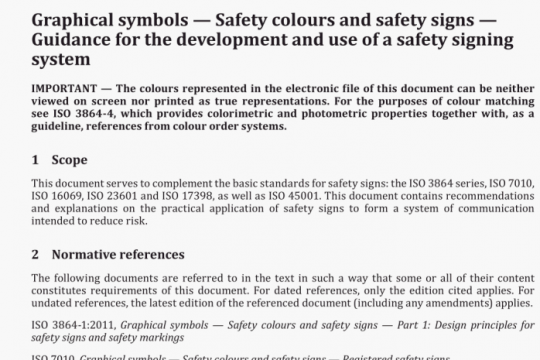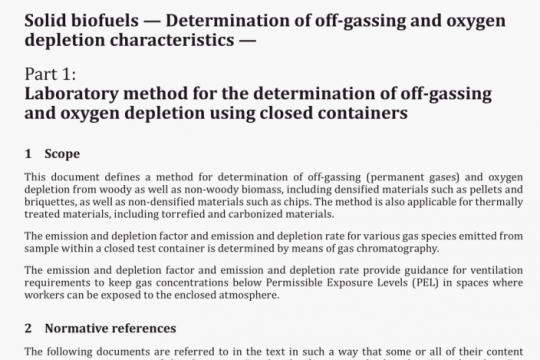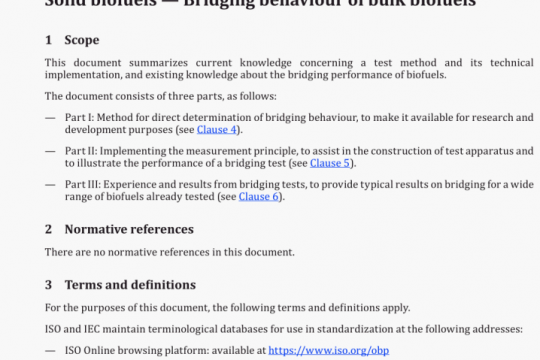ISO 13919-2 pdf free download
ISO 13919-2-2021 pdf free download.Electron and laser-beam welded joints一Requirements and recommendations on quality levels for imperfections – Part 2: Aluminium, magnesium and their alloys and pure copper.
This document gives guidance on levels of imperfections in electron and laser beam welded joints in aluminium, magnesium and their alloys and pure copper. Three levels are given in such a way as to permit application for a wide range of welded fabrications. The levels refer to production quality and not to the Fitness-for-pu rpose of the product manufactured.
This document applies to electron and laser beam welding of:
— aluminium and its alloys;
— magnesium and its alloys;
— pure copper (e.g. Cu-ETP1 CWOO3A, Cu-ETP CWOO4A, Cu-FRHC CWOO5A, Cu-FRTP CWOO6A, Cu-OF 1 CWOO7A, Cu-OF CWOO8A, Cu-OFE CWOO9A, Cu-PHC CWO2OA, Cu-HCP CWO2IA, Cu-PHCE CWO22A, Cu-DIP CWO23A, Cu-D[IP CWO24A);
— all types of welds welded with or without additional filler wire;
— materials equal to or above 0,5 mm thickness for electron and laser beam welding.
When significant deviations from the joint geometries and dimensions stated in this document are present in the welded product, it is necessary to evaluate to what extent the provisions of this document can apply.
NOTE For circular welds, a lower quality level can be specified for the fade-out zone.
Metallurgical aspects, e.g. grain size, hardness, hydrogen embrittlement (pure copper) are not covered by this document.
This document is directly applicable to visual examination of welds and does not include details of recommended methods of detection or sizing by other non-destructive means. There are difficulties in using these limits to establish appropriate criteria applicable to non-destructive testing methods, such as ultrasonic, radiographic and penetrant testing, and they can need to be supplemented by requirements for inspection, examination and testing.
2 Normative references
The following documents are referred to in the text in such a way that some or all of their content constitutes requirements of this document. For dated references, only the edition cited applies. For undated references, the latest edition of the referenced document (including any amendments) applies.
ISO 10042, Welding — Arc-welded joints in aluminium and its alloys — Quality levels for imperfections
3 Terms and definitions
No terms and definitions are listed in this document.
ISO and IEC maintain terminological databases for use in standardization at the following addresses:
— ISO Online browsing platform: available at https://www.iso.org/obp
— I EC Electroped ia: available at http://www.electia.org/
4 Symbols and abbreviated terms
distance between two imperfections (pore, cavity)
width of weld
required width of weld br width of weld root
maximum size of an imperfection (pore, cavity) projected areas of pores or cavities
size of the imperfection (height, width) deviation from the weld penetration
length of imperfection (measured in any direction)
weld length under consideration (weld length examined) length of combined porosity (affected weld length)
weld penetration
weld penetration in T-joint
work-piece thickness
angle of angular misalignment
5 Evaluation of welds
Limits for imperfections are given in Table 1. These limits apply to the finished weld and may also be applied to an intermediate stage of fabrication.
If a method other than macro examination is used for the detection of imperfections, only those
imperfections which can be detected with a maximum magnification of tenfold shall be considered.
Cracks (see Table 1. No 1.1, No 1.2, No 2.1 and No. 2.2) and micro lack of fusion (see Tah11, No 1.5 and No 2.7) are excluded.
A welded joint should normally be evaluated separately for each individual type of imperfection.
Any two adjacent imperfections separated by a distance lesser than the major dimension of the smaller imperfection shall be considered a single imperfection.
For joints made of base materials having different thicknesses, the evaluation of the defects shall be based on the thickness of the thinnest base material. For stake welds made in parallel joints and lap joints, tne evaluation oi me cierects snail ne nasea on me sum or the thickness ot the base materials br full penetration welds, and on the designed fusion penetration for partial penetration welds.
Annex A includes examples of determination of percentage (%) porosity and Annex B includes additional information for the use of this document.ISO 13919-2 pdf download.




